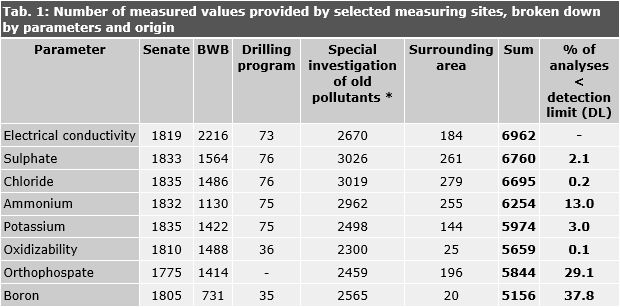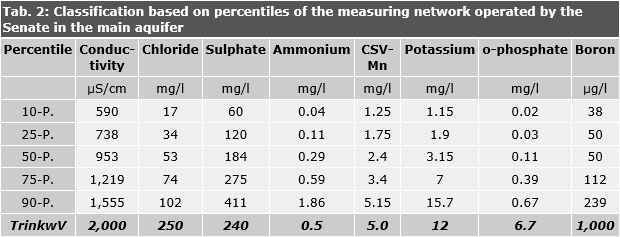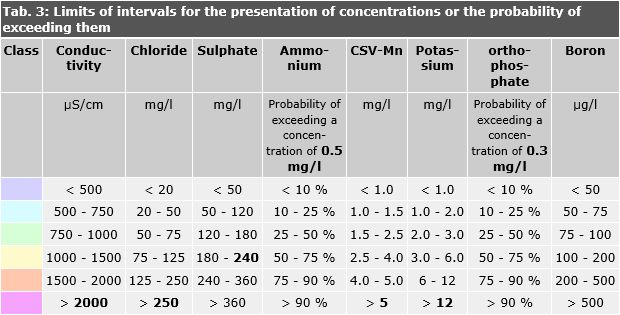Description
For regionalisation purposes, the kriging estimate, which is based on weighted means of variable values, was chosen as the geostatistical approach. Measurements performed in selected places (groundwater measuring sites) are used for the continuous, area-wide determination of a parameter with spatial distribution. To move from the „point to the area“, i.e. to obtain data for the area-wide distribution of the parameter, the information derived from point measurements must be subjected to spatial interpretation. But a variable may take a different value in each place in space. Hence it is often impossible to provide a complete description of this variability. However, in most cases it is not random, but shaped by a certain spatial continuity. It is noticed that measured values from adjacent points show greater similarity than those that are more apart. “Ordinary kriging” (referred to as “OK”) was chosen from the large number of available
kriging estimates for the parameters electrical conductivity, sulphate, chloride, potassium, oxidizability and boron. As a result of the spatial analysis performed for each chosen estimated point within a grid, this technique, which is also known as “ordinary” kriging, furnishes a concentration expressed in the respective absolute unit of measurement of the hydrochemical parameter in question. That was the aim of the investigation.
“Indicator kriging“ (referred to as „IK“) was conducted for the parameters ammonium and orthophosphate, since the variogram analysis did not show the measured values of these parameters to be spatially interrelated. Unlike OK, the measured values are not directly used for the indicator kriging approach, but are converted into binary codes (0 and 1), depending on the threshold to be determined. The result of IK provides information on the probability of exceeding the threshold. A value of 75% means, for example, that there exists a 75% probability of the threshold being exceeded in a given area. These codes are then used in the kriging estimate in the same way as OK, thus permitting an assessment for the area. The indicator kriging approach is applied if the proportion of measured values below the respective detection limit is relatively great. This is the case for the parameters ammonium, orthophosphate and boron. However, since the
variogram analysis of the original measured values for the parameter boron showed a correlation that could be interpreted as a function of the distance, preference was given to interpolation according to the OK approach.



